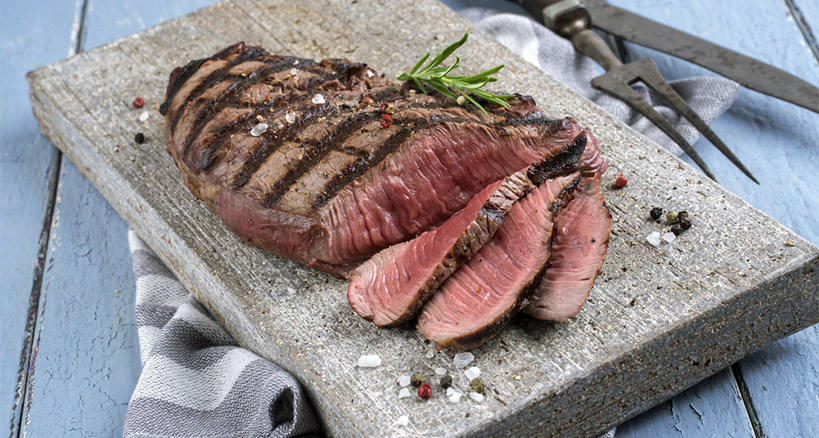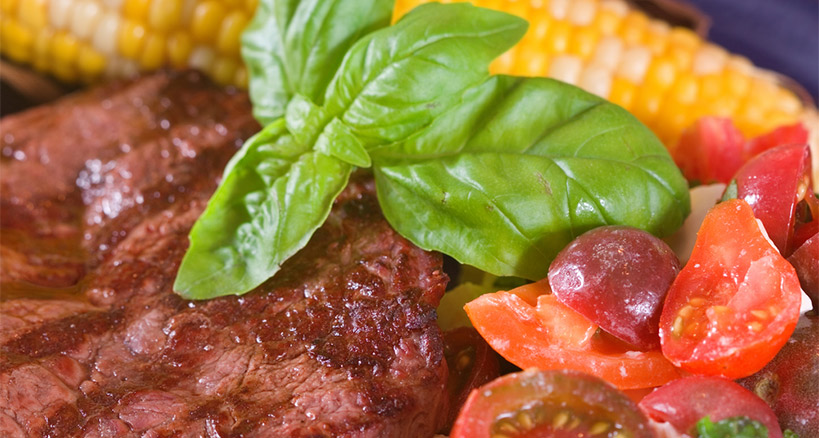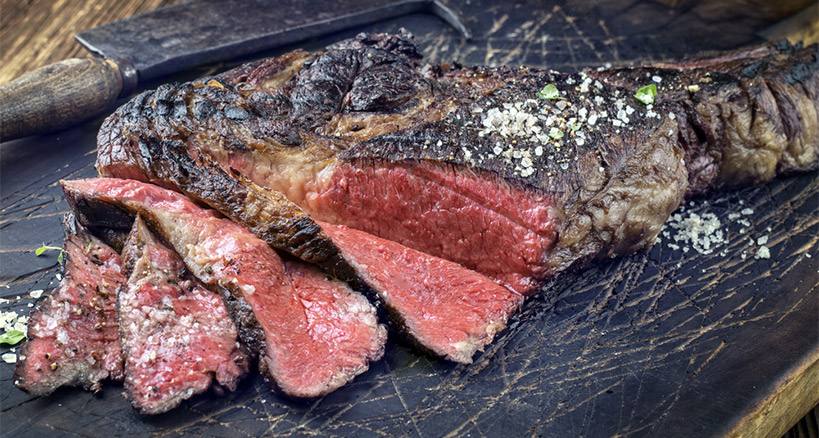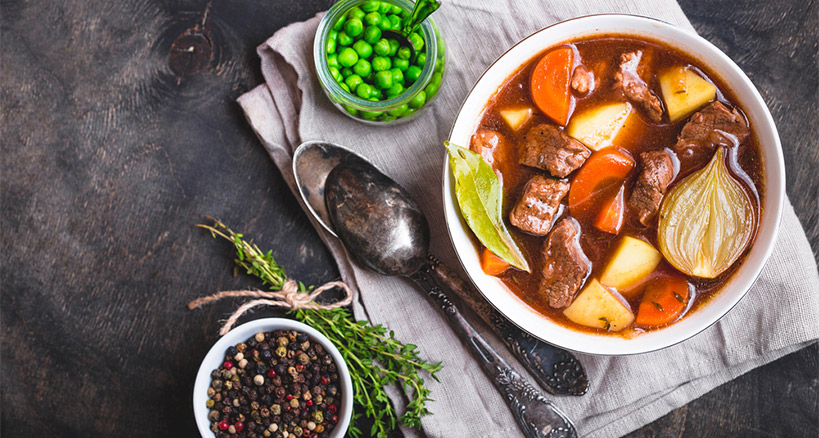
Catered Events Benefit from Bison
Keeping up with food trends is crucial to offering customers the right menu. These days, “right” means being the healthiest and most environmentally friendly, as well as the most adventurous and interesting. Bison fulfills all the criteria of the trend-savvy consumer, and its place atop catering lists of “hot” items seems to be growing steadily.
History of Bison
Not everyone knows the difference between buffalo and bison; they’re not the same thing and the animals are not interchangeable. The American Bison is native to North and South America and Europe, while most buffalo species reside in Africa and Asia. They’re related, but not identical; in fact, North American bison have a beard, while their Asian relatives don’t. According to the National Park Service, when early explorers came to North America, they thought the animals resembled old world buffalo, and so they called them that, contributing to the general confusion.
During the 20th century, bison came very close to extinction. When the aforementioned early explorers arrived in North America in the late 1500s, there may have been as many as 60 million bison on the continent. In the 1880s, there were approximately 40 million in North America; but by the 1900s, hunting had reduced the population to a mere 1,000. The bison that exist today were bred from just a few individual bison, and they are thriving due to smart breeding efforts and restoration of their native grazing land. The animals now number roughly 400,000 and the bison business is booming.

Bison: The Healthier Meat
The American Heart Association includes bison as a lean meat option in their Diet and Lifestyle Recommendations. The greatest difference between beef and bison is their respective health benefits; they’re both delicious, but bison meat has the edge when it comes to health and nutrients. Like beef, bison is an excellent source of iron, zinc and certain B vitamins, including vitamin B12 and niacin. However, bison is lower in calories. According to the U.S. Department of Agriculture (USDA) a 3-ounce burger of ground grass-fed bison contains 152 calories and 7 grams of fat, versus a patty that contains even the leanest beef, which has 184 calories and 10 grams of fat. Grass-fed bison contain less saturated fat than beef and is lower in cholesterol.
While bison and beef contain similar levels of protein, bison meat boasts more iron than beef: 2.78 milligrams compared to 2.24 in an equal cut of beef, causing it to be named a superfood for women. Both bison and beef are rich in omega-3s; however, because bison spend more time in the pasture (and no time in feedlots, like cattle), they are richer in omega-3 than cows.
Bison do well eating most of the grasses in the United States, cutting down on the hefty costs associated with commercial feed. In addition, many cows are treated with antibiotics and hormones, which are harmful to people, while it is actually illegal to give bison growth hormones.

Taste and Texture of Bison
But health benefits alone haven’t turned bison into what The New York Times calls a hot food trend; it has to taste good as well, and that it does. Most people who are eating bison for the first time discover that it’s a little sweeter than beef, because the animals are raised on grass. Bison is available in the same cuts as beef from cattle and can be substituted in just about any beef recipe. Bison and beef have a similar texture, though bison tends to be chewier.
The Trend Continues
The demand for bison continues due to a three-pronged trend: healthier diets, natural and sustainable food, and the adventurous consumer who is always on the lookout for novel and exciting tastes. At this point, now that people have discovered bison and love it, producers are having trouble keeping up with the demand. Nonetheless, bison meat is still considered a “niche” segment of the meat market. To put it in comparative terms – bison vs. cattle – the total number of bison processed per year—estimated at 67,000—equals only 50% of one day’s worth of processed beef cattle. On a more individual level, the average American eats about 55 pounds of beef per year and less than a pound of bison per year.
Nonetheless, demand for bison continues and prices have risen. The National Bison Association reports prices have increased from $1.60 a pound in 2004 to nearly $4 a pound last year (at the wholesale level). The USDA recently agreed to its first purchase of bison meat for the Federal School Lunch Program, and the National Bison Association predicts total sales will top $300 million annually, up from $280 million just a year ago.
How to Cook Bison
Individual cuts of bison are identical to beef. Bison meat has a deeper red hue due to the fact that bison has lower fat content and less marbling than beef. But, because bison is lean, it will cook more quickly making overcooked bison hard-to-chew. Use these general guidelines – from the National Bison Association – when cooking bison:
Ground bison meat should be cooked to an internal temperature of at least 160°F and the juices should be clear, not red. Roasts and steaks should be cooked to an internal temperature of 145° F (medium rare) or 160°F (medium).
When oven broiling, the oven should be set at around 275°F. Move the broiler rack away from the heat, about a notch lower than where you would normally broil beef steaks. Expect a buffalo steak to cook 30% faster than a beef steak. Bison steaks are best when cooked rare to medium to maintain the moisture and flavor of the meat.
Use Bison at Your Next Event
The High Plains Bison website is a great source of bison-based information and recipes. Here’s a dish that will feed, and satisfy, a hungry crowd:

Beer-Braised Bison Pot Roast with Rosemary
Ingredients
- 3-lb bison chuck roll, tied
- Kosher salt and freshly ground black pepper
- 2 tablespoons vegetable oil
- 2-3 onions, finely sliced
- 1 cup finely diced celery
- 1 cup finely diced carrot
- 1/4 cup roughly chopped fresh rosemary leaves, divided, stems reserved
- 1/2 cup tomato paste
- 1 tablespoon soy sauce
- 1 quart chicken broth
- 2 bay leaves
- 24 oz. lager-style beer
Directions
- Adjust oven rack to lower position and preheat oven to 275°F. Season bison with salt and pepper.
- Heat oil in a large Dutch oven over high heat until lightly smoking. Place bison in Dutch oven and cook until first side is deeply browned, about 8 minutes. Turn and cook until second side is browned, about 6 minutes longer. Continue turning and cooking until all sides are browned, reducing heat if oil is smoking excessively. Transfer to a large platter.
- Add onions, celery, and carrots to pot and cook, scraping up any browned bits from bottom. Reduce heat to medium and continue to cook, stirring occasionally, until onions are deeply browned, about 16 minutes total. Stir in half of rosemary, tomato paste, and soy sauce, and stir until combined.
- Whisk in beer and stock. Return chuck roll to pot and add bay leaves and rosemary stems. Bring to a boil, cover, and transfer to oven. Cook until a skewer or knife inserted into the bison penetrates easily, about 4 hours.
- Remove from oven, cool, and transfer to refrigerator overnight. The next day, remove bison, untie string, and slice.
- Reheat sauce until simmering, and season to taste with salt and pepper. Add bison slices and carefully heat through. Sprinkle with remaining rosemary and serve.
Give Your Customers the Healthier Option
Bison is the leaner, healthier, more sustainable option when it comes to meat, and your customers will appreciate its inclusion in your menu. The bison trend is here to stay and you’ll impress clients and guests alike when you serve bison at your next catered event.